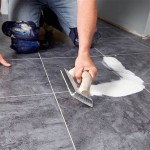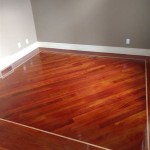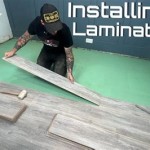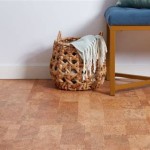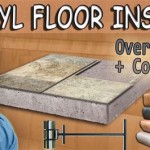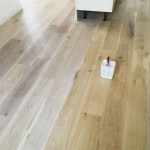How Does Vinyl Plank Flooring Stay in Place?
Vinyl plank flooring has become a popular choice for homeowners and businesses alike, offering a durable, stylish, and affordable alternative to traditional flooring materials. Its ability to mimic the look and feel of natural materials like wood and stone, coupled with its ease of installation and maintenance, makes it a highly attractive option. A key factor in its success is the secure and reliable way it stays in place, ensuring a long-lasting and visually appealing floor. This article explores the mechanisms behind the secure installation of vinyl plank flooring.
Click-Lock Systems: Interlocking for Stability
One of the most prevalent methods used to secure vinyl plank flooring is the click-lock system. This innovative system, developed specifically for luxury vinyl plank (LVP), employs a unique tongue-and-groove design that interlocks individual planks together. The planks are carefully engineered with beveled edges and a special locking mechanism that allows them to click securely into place, creating a tight and seamless surface.
When installing click-lock vinyl plank flooring, each plank is carefully positioned and pressed down into the groove of the adjacent plank. The tongue-and-groove design creates a robust interlocking connection along the length and width of the planks, effectively locking them together and preventing shifting or movement. The tight fit eliminates gaps and minimizes the chances of moisture or dust accumulating underneath the flooring.
Adhesive: A Strong Bond for Durability
For applications where a more permanent and secure installation is desired, or for areas with heavy foot traffic, adhesive is often used to complement the click-lock system or as a standalone method to secure the vinyl planks. This approach involves applying a specialized adhesive to the subfloor, which then bonds to the back of the vinyl planks as they are laid down. The adhesive creates a strong and lasting bond that prevents the planks from lifting or moving, ensuring a long-lasting and stable installation.
The adhesive used for vinyl plank flooring is specifically designed for its purpose, providing excellent adhesion to various subfloor materials such as concrete, plywood, and even existing hardwood floors. The types of adhesives available vary in their drying times and ease of application, offering flexibility for different installation scenarios. Some adhesives are water-resistant, making them ideal for areas prone to moisture, while others are formulated for high-traffic areas to withstand heavier wear and tear.
Subfloor Preparation: The Foundation for Success
Regardless of the chosen installation method, the quality of the subfloor plays a significant role in the longevity and stability of vinyl plank flooring. A smooth, level, and dry subfloor is essential to ensure a successful installation and prevent issues like uneven flooring, squeaking, or cracking. If the subfloor is uneven or has major imperfections, it must be properly prepared before installing the vinyl plank flooring.
This preparation often involves leveling the subfloor using a self-leveling compound or a combination of shims and underlayment. The underlayment can act as a moisture barrier, provide added insulation, and create a more comfortable walking surface. By ensuring a solid and level subfloor, the vinyl planks are able to maintain their position and prevent any potential issues from arising over time.
Additional Considerations:
While the click-lock system and adhesive are the primary methods for keeping vinyl plank flooring in place, there are other considerations that contribute to a successful installation:
- Proper Installation Technique: The correct installation procedure is crucial for ensuring the planks lock together securely and the adhesive bonds effectively. Following the manufacturer's instructions and using appropriate tools is essential for achieving a professional and long-lasting result.
- Expansion Gaps: Leaving expansion gaps around the perimeter of the room allows for the natural movement of the vinyl planks due to temperature fluctuations and moisture changes. These gaps prevent the planks from buckling, warping, or creating uneven floors.
- Transition Strips: When installing vinyl plank flooring in multiple rooms, transition strips are used to create a smooth and seamless transition between different flooring surfaces, ensuring a consistent look and feel throughout the home. These strips also help to prevent the planks from rubbing against each other and causing damage.
By understanding the mechanisms behind the secure installation of vinyl plank flooring, homeowners and businesses can make informed decisions when choosing this flooring option. The combination of advanced click-lock systems, adhesive bonding techniques, and meticulous subfloor preparation ensures a stable, durable, and visually appealing floor that will enhance the beauty and functionality of any space.

10 Beginner Mistakes Installing Vinyl Plank Flooring

Laying Vinyl Planks The Right Way Expert Guide By Fantastic Handyman

Glue Down Vs Floating Luxury Vinyl Flooring

Installing Vinyl Plank Flooring How To Fixthisbuildthat

What Is Loose Lay Vinyl Flooring A Plank Guide Reallyfloors America S Est Hardwood

Installing Vinyl Plank Flooring How To Fixthisbuildthat

20 Tips For A Great Vinyl Plank Flooring Installation

How To Install Luxury Vinyl Plank Flooring Quick And Simple Casa Watkins Living

Do Vinyl Planks Expand Why Installers Put Expansion Gaps Harper Floors

Installing Vinyl Plank Flooring How To Fixthisbuildthat
See Also
